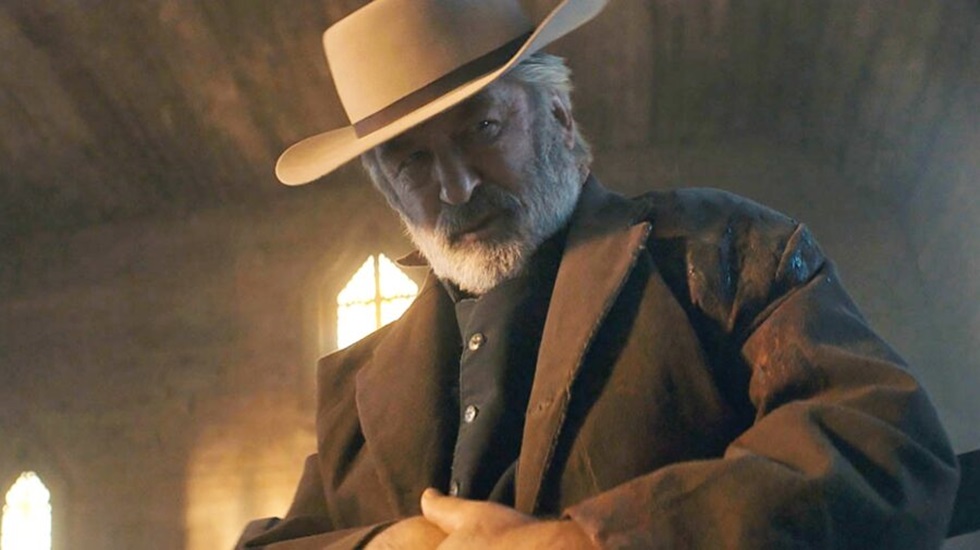
One of the more hilarious moments of the Warren Commission’s most likely coverup of the Kennedy Assassination occurred when Commission member and Pennsylvania Senator Arlen Specter presented what became known as the Magic Bullet Theory. Specter claimed, and the Commission agreed, that the same bullet had caused a total of seven wounds to both President Kennedy and Texas Governor John Connally, exiting Kennedy’s neck in the back of the limousine, moving downward then reversing trajectory to move upward and cause multiple wounds in Connally. The bullet finally ended up in pristine shape on a stretcher at the hospital where they were both taken. All this to prove that Lee Harvey Oswald acted alone.
Most scholars of the assassination have put the Magic Bullet Theory to rest. But now we have a new Magic Bullet Theory propounded by the actor and, more importantly in this case, producer Alec Baldwin, who claims that a bullet in a chamber of a gun he did not fire mysteriously exited the chamber and killed Halyna Hutchins, the director of photography on Rust, a Western he was filming at the time.
Unbelievable? A New Mexico grand jury thought so, and Baldwin has recently been reindicted for involuntary manslaughter, after an initial charge was dropped, for his role in the death of cinematographer Hutchins. The indictment accuses him of two felony counts, one springing from his role as producer charging him on the set with “total disregard or indifference for the safety of others,” and the other charging him with firing the weapon. Unfortunately, he can only be convicted of one of the counts.

Two problems are being exposed here. The first is the contempt of the entertainment and political elite for everyone else. Baldwin, staunch stalwart of the Democratic Party and its corporate wing the Democratic National Committee founded in the Bill Clinton era, has laid out a defense—“Someone is responsible for what happened, and I can’t say who it is, but I know it’s not me”—that is as implausible as Clinton’s claim, caught in fellatio delicto with Monica Lewinsky, that he didn’t have sex in the Oval Office because oral is not sex.
Baldwin’s high-priced legal team got the first indictment thrown out on procedural grounds, but a new forensic report claiming that he “must have pulled the trigger” has him back in the docks again.
His team then bought off the victim’s husband, trading his silence and refusal to proceed with a civil suit to make him a co-producer on the film. The height of arrogance, though, may be Baldwin’s claim that the producers have bravely charged ahead and completed the film “as a tribute to Ms. Hutchins.” Using the death of a promising camerawoman as an excuse to publicize the film is about as cynical a publicity campaign as has ever been waged. What is the family supposed to think when they watch the shots their loved one engineered and then the shots her replacement filmed?
Baldwin appeared in a “surprise cameo” on Saturday Night Live as the evidence was being presented to the grand jury to remind them that he was not too big to fail but too important to indict. Of course, if Saturday Night Live, a supposedly satirical revue that gave up that ghost a long time ago, was doing its job, he would have been the subject of spoofing and ridicule rather than the beneficiary of a public appearance designed to sway a jury. The contempt for ordinary people is similar to Hilary Clinton’s branding of working-class Americans as “deplorables” in a campaign, waged almost solely on the East and West coasts, where she boasted that she was “flying over America.” Baldwin, who plays a grizzled outlaw in Rust, and who is beginning to resemble one off camera, was famous on that show for his Donald Trump imitation where he satirized the lawlessness of that public persona, a characteristic he is now flaunting himself.
The second charge, disregard for the safety of others, is in some ways worse and more revealing about the nature of this corner of capitalist production.
Baldwin as producer was at least partly responsible for a set that, because of skimping on a sparse budget and rushing into production, was a maze of tensions, a tempest ready to burst. The armorer, that is, the gun handler, a crucial job on a Western, Hannah Gutierrez-Reed, now up on manslaughter charges, was hired at 24 to do a job that required a far more experienced person because due to a surge in production in New Mexico, there was a lack of capable personnel to do that job. She was also hired as Props Master, a demanding job that is usually handled by a separate person. As an armorer, the inexperienced Gutierrez-Reed had previously worked on a Nicholas Cage film The Old Way where there were two accidental gun charges and calls for her dismissal. Armorer was not her first choice of job on a set. Rather than doing either job, she said she wanted to be in front of the camera as a model, which she described as a “burning passion,” which she was “yearn[ing] to turn…into a career,” indicating her mind may have been elsewhere. In addition, props, which includes weapons, usually has two weeks of pre-preparation before shooting, but because the film was already behind budget this inexperienced team, which also included a 24-year-old equally inexperienced props assistant, was only given one week. The harried Gutierrez-Reed was seen on the set several times, according to one observer, running with guns, a sight he had never seen before.
The shooting that killed the camerawoman and wounded the director Joel Souza was not the first misfire on a troubled set. Another had occurred a few days before, and just hours before the shooting six members of the camera crew walked off the set complaining of long hours, long commutes and not being paid on time. One worker described “3 accidental discharges” and noted the set was “super unsafe.” Another noted that “Corners were being cut” and that the production had brought in nonunion workers in order to keep shooting.

This kind of under-supervised dangerous work setting, due to penny-pinching in order not to go over budget, where the workers pay the price for a rush to push out product and maximize profits is nothing new. In If He Hollers Let Him Go Chester Himes brilliantly describes the chaos and danger in the hastily assembled World War II shipbuilding industry in Los Angeles, the center of wartime production:
“The decks were low, and with the tools and equipment of the workers, the thousand and one lines of the welders, the chippers, the blowers, the burners, the light lines, the wooden staging, combined with the equipment of the ship, the shapes and plates, the ventilation trunks and ducts, reducers, dividers, transformers, the machines, lathes, mills, and such, half yet to be installed, the place looked like a littered madhouse. I had to pick every step to find a foot-size clearance of deck space, and at the same time to keep looking up so I wouldn’t tear off an ear or knock out an eye against some overhanging shape. Every two or three steps I’d bump into another worker. The only time anybody ever apologized was when they knocked you down.”
This kind of danger is ever present in capitalist factories and carries over to assembly-like Hollywood film production.
The background to all of this is that after Covid, production companies were rushing to get the cameras rolling to provide streamers suffering from a lack of product with new films and series. Added to that desire to crank out product quickly were the particularities of New Mexico, site of numerous Westerns, where union film workers were stretched trying to cover this surge.

The pressure on Baldwin resulting in this corner-cutting was also coming from the film’s investors, one of whom, Streamline Global was famous for exploiting a provision in the U.S. tax code that allows investors to write off the first 15 to 20 million dollars and is designed to “ease wealthy individuals’ tax burdens through film investment.” The provision has accounted for a good deal of fraud as film and television budgets are inflated to create a loss and open up bigger tax cuts for investors. The procedure was described by one observer as “playing ‘the audit lottery,’” meaning investors are hoping in the end they can cheat the government and not get caught taking unwarranted tax credits.
Streamline Global, the name itself boasting of its cost-cutting, is run by Emily Hunter Salveson, whose great uncle Gerald Loeb helped found E.F. Hutton which in the ’80s pleaded guilty to 2000 counts of mail fraud and had the low investor grade of “D.” Loeb produced that paean to capitalism and American empire, the Ayn Rand-based movie The Fountainhead.
The bottom line of the whole enterprise may be summed up by a saying conveyed to Baldwin, playing an indie filmmaker in 2013’s Seduced and Abandoned, by an investor, “When I make a movie, all I think about is the profit,” a line Mr. Baldwin may have unfortunately taken too much to heart.
We hope you appreciated this article. At People’s World, we believe news and information should be free and accessible to all, but we need your help. Our journalism is free of corporate influence and paywalls because we are totally reader-supported. Only you, our readers and supporters, make this possible. If you enjoy reading People’s World and the stories we bring you, please support our work by donating or becoming a monthly sustainer today. Thank you!










